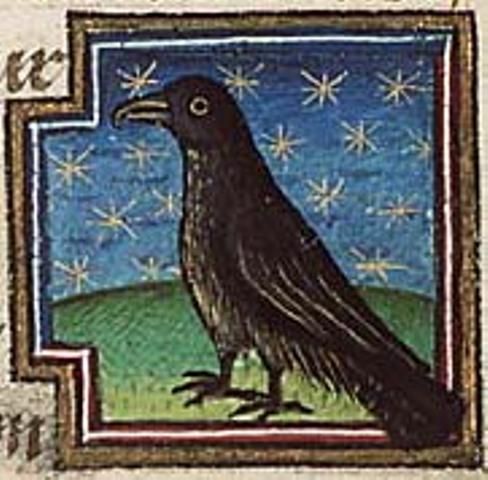















The History of the Kings of Britain Historia Regnum Britanniae
Geoffrey of Monmouth's opus, finished in 1136, which purports to be the true history of the isle of Britain from its settlement by Brutus the Trojan, grandson of Aeneas, to the death of Cadawallader the Blessed in the seventh century. The majority of the book is composed of euhemerized gods and myths; starting with the coming of the Romans in the first century BC, he has to be that much more truthful, and the figures become real people like Cymbeline (Cunobelinos) and Coel (Old King Cole). However, the majority of figures are mythological. Geoffrey claims to be translating from a Welsh texts; this may be true, but that doesn't make the text true.
It is from Geoffrey that we get many of our Arthurian legends. For instance, the figure of Merlin was rescued from Welsh obscurity and placed into Geoffrey's work as a prophet who counciled Arthur's father and engendered Arthur's begetting. Gawain is here, as is Mordred, but later figures like Lancelot are nonexistant, being the creation of Romance. The account of Arthur's wounding (not death) at Camlann and subsequent sailing to Avalon is first recounted here.
Sources
Geoffrey claimed he was translating from a "British" book; no such book has come forward. However, that is not to say he invented the entire history. Instead, he seems to have used a number of extant sources: Gildas' De Excidio; Nennius' Historia Brittonum; Bede's Ecclesiastic History; the Welsh Annals; and possibly Orosius' Seven Books of History. He may also have known a version of "Culhwch ac Olwen" as well as other Welsh legends, or even manuscripts which have since disappeared.
Manuscripts
There are over 200 manuscripts with a copy of the HRB; the four most relevant, however, are Cambridge 1706 Ii.I.14, Berne Stadtbibliotek MS 568, Jesus MS CXI (aka the Red Book of Hergest), and Cotton Cleopatra B.v.
The first two are Latin manuscripts which are believed to be the earliest copies, dating to 1136, the generally-accepted date of Geoffrey's writing (though 1138 has also been suggested). Each Latin manuscript contains a dedication to the (presumed) recipient--Camb. 1706 Ii.I.14 is dedicated to Robert, earl of Gloucester, while Berne Burgerbibliotek MS 568 is dedicated to Stephen of Blois, king of England 1135-1154. (Geoffrey certainly knew well enough to court both sides of the political aisle.)
Jesus MS CXI is one of the most famous medieval Welsh manuscripts; its Welsh translation of the HRB is not a perfect translation (it drops some episodes, such as sections of the battles with Hengist and Horsa) while adding others (such as the story of Lludd and Llefeyls). However, unlike the Brut Tysilo, it is not a paraphrase of Geoffrey's work, either, but something in between. There are other Welsh versions of Geoffrey, not necessarily drawn from the Red Book; for instance, the closely-related versions of the Black Book of Basingwerk, and Cotton Cleopatra B.v.
Editions
Regarding Latin editions, there was no reliable Latin edition of HRB until Acton Griscom's study in 1929, which was a careful transcription of Camb. 1706 Ii.I.14, with variations from Berne Burgerbibliotek MS 568. Each page shows the Latin of Camb.1706, followed by the variations, followed by a translation of Jes.CXI.
Since then, there have been a few transcriptions, such as the 1985 Neil Wright edition of Berne Burgerbibliotek MS 568, with variations in a subsequent volume, published by Boydell and Brewer.
With regard to Welsh editions, the first was J.G. Evan's landmark transcription of the Bruts from the Red Book of Hergest. Following that, there has been a transcription made of the Cotton Cleopatra B.v. version (John Jay Parry, 1937), which is closely related to the version found in the Black Book of Basingwerk. Parry's work also contains a translation of the Welsh text, while Evans' does not.

Back to "H" | Back to JCE
Home
Mary Jones © 2003